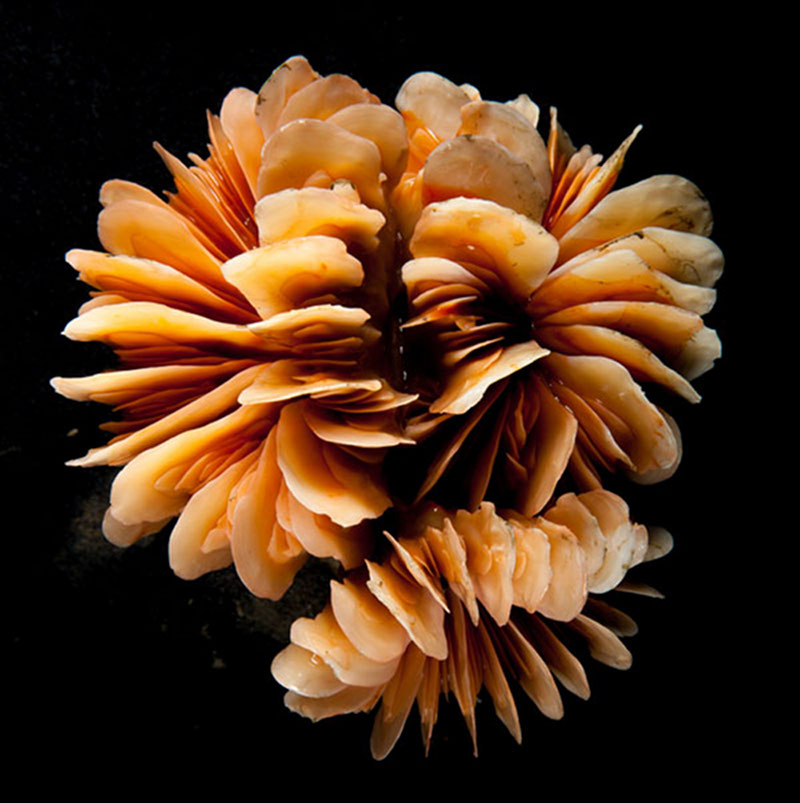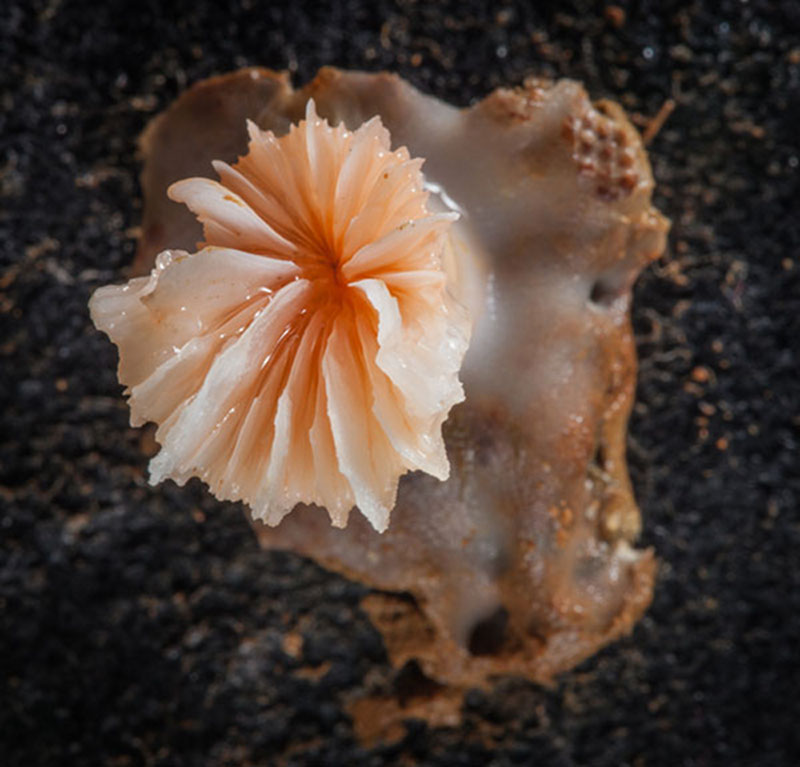
By Sandra Brooke - Marine Conservation Institute/OIMB
September 11, 2012

Desmophyllum dianthus has had several names since its initial discovery. Sometimes it is called the cockscomb coral for their elaborate septae – the fine blades that divide the coral tissue that are evident in this image. Clusters such as this may be clones, and we have taken genetic materials to confirm this hypothesis. Image courtesy of Art Howard, Deepwater Canyons 2012 Expedition, NOAA-OER/BOEM. Download image (jpg, 108 KB).
Stony corals come in many shapes and sizes, from branching colonies that can form massive reefs, to tiny solitary or ‘cup’ corals that are only a few millimeters across. During this cruise we have not seen any stony corals during the ROV dives, which has been rather a disappointment as several of the scientists need them for their research. Yesterday changed that. Just before lunchtime we were moving slowly up a muddy slope collecting video data, but my mind was wandering with the tantalizing smells wafting up from the galley. Suddenly a giant rock wall loomed ahead of us and colonies of gorgonians became visible as we crept closer. I noticed a strange pink-orange object that didn’t quite look like an anemone and was thrilled when the image in the video resolved to reveal a single individual of the giant cup coral Desmophyllum dianthus. These can be several centimeters across and are one of the most glamorous of the cup corals, with large curved processes called septae that rise above the main body of the coral giving it an elaborate, delicate shape. After this initial sighting and the general excitement it elicited, we searched around and found several more with small and large individuals clustered. Even though these are all individual animals, some may be genetic clones of each other. Corals have the ability to grow another complete body from the original colony; this is called asexual reproduction and is the mechanism through which tiny individual coral polyps can eventually form massive reefs. These corals however, are not the reef-building variety but because they are so large, big clusters can provide shelter for small fauna. Yesterday we found polychaete worms among two of the coral clusters, about the same color as the corals. This may be some kind of arrangement where the coral or worm or both benefit from the association, but it is too early to tell.

This small solitary coral, just a centimeter across, will grow and potentially form clusters of large individuals. Image courtesy of Art Howard, Deepwater Canyons 2012 Expedition, NOAA-OER/BOEM. Download image (jpg, 91 KB).
Today we are back at the Desmophyllum site at 680 m depth on the western flank of the canyon wall. We have found several more clusters and the samples we are collecting will be used to analyze their age, growth rate, reproductive biology and population genetics, as well as conduct physiology experiments if we can keep them alive.